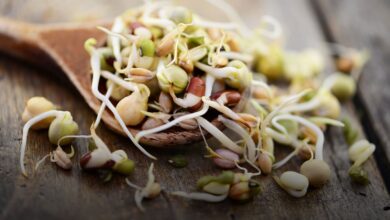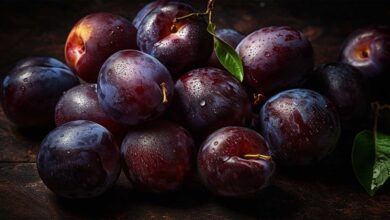Lentils are the ideal food for athletes!

Lentils are a legume that does not receive enough attention in our daily diet. However, it is an important source of plant proteins and nutrients for athletes. Moreover, this starchy food is very easy to cook and can be used in a wide range of dishes. In this article, we will discover why lentils are considered the ideal food for athletes, what are their health benefits, the different types of lentils, and how to add them to your diet.
Why are lenses so good for athletes?
Lentils are rich in high-quality protein, making them ideal for athletes looking to build and repair muscle. In addition, lentils are an excellent source of dietary fiber, which helps stabilize blood sugar levels and control appetite. Lentils are also rich in nutrients such as iron, calcium, zinc and vitamin B, making them a very nutritious food for athletes. For people with gluten issues, lentils contain no traces of it.
Quality protein source
Lentils are an excellent source of protein and provide an ideal alternative to meat or fish. Up to a third of calories come from protein, making it the third largest source of protein, as a percentage of weight, of any legume or nut. Like other legumes, lentils are low in some essential amino acids, namely methionine and cysteine. This can be easily compensated for by combining lentils with grains such as rice or wheat.
Rich in fiber
Lentils are also a great source of fibre, which can help improve digestion and regulate blood sugar levels. Fiber can also help prevent constipation and heart disease. Lentils are particularly rich in soluble fiber, which can help lower blood cholesterol levels.
Important vitamins and minerals
Lentils are also a source of many important vitamins and minerals. They contain high levels of iron, folate and magnesium, as well as small amounts of many other vitamins and minerals. Iron is important for the formation of red blood cells, while folic acid may help prevent heart disease and reduce the risk of birth defects in pregnant women. Magnesium can help prevent muscle cramps and improve sleep quality.
Dietary intake of lentils
Image credit © Depositphotos
What are the health benefits of lentils?
Lentils are increasingly popular due to their versatility in cooking and their many health benefits. Discover the main health benefits of lentils below.
Reduces the risk of some chronic diseases
studies(1) Regular consumption of lentils has been shown to reduce the risk of chronic diseases such as diabetes, obesity, cancer and heart disease. This is due to their high content of protective phytochemicals called polyphenols: lentils are among the legumes richest in polyphenols. It is therefore not surprising that lentils have an antioxidant, antibacterial, antiviral, anti-inflammatory effect and have a cardio-protective effect.
Lowers blood pressure
The high amount of potassium in lentils helps counteract the unwanted effects of salt, which can cause an increase in blood pressure (hypertension). 100 grams of lentils contain more than 350 mg of potassium, and very little sodium. Which makes it an ideal food for people who suffer from high blood pressure.
Improve heart health
Folic acid protects your heart and promotes the formation of red blood cells. They are especially important for your baby's development if you are pregnant. Lentils contain a lot of them, as well as iron and vitamin B1, which also contribute to heart health.
Lentil consumption is linked to a lower risk of heart disease, by lowering bad cholesterol and blood pressure(2). study(3) It also revealed that eating these legumes lowers blood pressure more than eating chickpeas, peas, or beans.
Brings energy
If you're tired, a good dose of iron can sometimes give you strength, especially if you have anemia. Iron helps produce hemoglobin, the molecule in red blood cells that allows them to transport oxygen throughout the body.
Lentils are an excellent source of iron, containing more than 3 mg per 100 grams. In comparison, ground beef contains about 2.5 mg. To improve iron absorption, I recommend combining lentils with a source of vitamin C such as tomatoes, potatoes, peppers, or Brussels sprouts.
What are the different types of lenses?
Lentils are edible seeds from the Fabaceae family. Like beans and peas, they grow in pods. The most common varieties are:
- Brown lentils (European lentils): This is the cheapest type of lentils that can be found already cooked in cans. Lentils stay brown, making them an easy substitute for black beans in veggie burgers and soups.
- Green lentils (French Lentils): These nutty flavored lentils hold firm when cooked. They are especially good in salads. Among the different types of green lentils, Puy green lentils, which benefit from the AOP (protected designation of origin), stand out for their exceptional protein content: 22.8 grams per 100 grams, or the same amount of protein as in meat.
- Red lentils : He is the one who cooks the fastest. These soft, sweet lentils become tender when cooked, allowing you to use them in Indian purees and dals. (These lenses also come in shades of yellow and orange.)
- Black lenses : The smallest, these lentils from Canada are almost like caviar. That's why they are called white lentils.
- Coral lentils Cultivated in India, the Middle East and North Africa, these lentils are small and round with a bright coral colour. They have a mild taste and a soft, melting texture. They contain 3 times more calcium than grains, and 7 times more iron than spinach. They are perfect for stews, salads, soups and stews.

Image credit © Depositphotos
Lentils are easy to prepare and cook. There is no need to soak it in water overnight, unlike many other grains. Simply rinse to remove any dirt or residue. Discard lentils that appear spoiled or damaged.
Red lentils cook quickly, usually within 5 minutes. Other lentils need to cook for at least 20 minutes or longer, so plan ahead. To do this, place them in a pot with enough water to cover them. It is important to boil the water before adding the lentils, then lower the temperature and let them simmer until tender. Add water if necessary.
There are many ways to incorporate lentils into your diet. Here are some ideas to get started:
- Add lentils to your salads for an extra source of protein and fiber.
- Use lentils to make soups and stews.
- Replace meat with lentils in your sauce dishes for a healthier, more economical option.
- Make a lentil bolognese to replace ground beef.
- Use lentils to make veggie burgers.
10 ideas for recipes with lentils
- D : An Indian dish cooked with lentils and spices.
- Lentil Soup : A nutritious and delicious soup made with lentils and vegetables.
- Lentil salad : A fresh and healthy salad made with lentils, vegetables and vinegar.
- Lentil curry : A spicy dish made of lentils and vegetables cooked in a spicy sauce.
- Lentil tagine : A steamed Moroccan dish with lentils, vegetables and spices.
- Lentil stew : A boiled dish made of lentils, meat and vegetables.
- Indian pie (Dosa): A thin and crispy pancake made from lentil flour and rice.
- Falafel : Fried balls that can be made from lentils, herbs, and spices, and are often served in a sandwich.
- Lentil burrito Burrito stuffed with lentils, rice, vegetables and sauces.
- Lentil taco : Tacos with lentils, vegetables, cheese and sauces.
Your frequently asked questions
How to store lentils?
Store dried lentils in a tightly closed container in a cool, dry place. They usually keep for about a year. After cooking, it will keep for about a week. You can also freeze cooked lentils for up to three months.
What are the side effects of consuming lentils?
If you eat too many lentils, or undercooked lentils, you may experience these effects and anyone close to you may hear them. In fact, lentils, like some fruits and vegetables, contain fiber that is difficult for the body to digest. This fiber also contributes to the development of good bacteria in the intestines. But too much of it can cause bloating and gas. To reduce these symptoms, I advise you to gradually increase your fiber consumption.
Do lentils help in losing weight?
Lentils, like other foods, are not able to cause weight loss on their own. However, in combination with regular physical activity and a balanced diet, it can help you maintain a healthy weight and prevent excess weight gain. In fact, as part of the weight loss process, lentils can be beneficial, because the large amount of fiber and protein they contain allows you to feel full quickly and reduce food cravings. Remember, the key to a healthy, balanced diet is variety. So do not hesitate to explore other legumes and do not neglect other food groups.
(Tags for translation)Why are lentils so beneficial for athletes?
Lentils are the ideal food for athletes!


